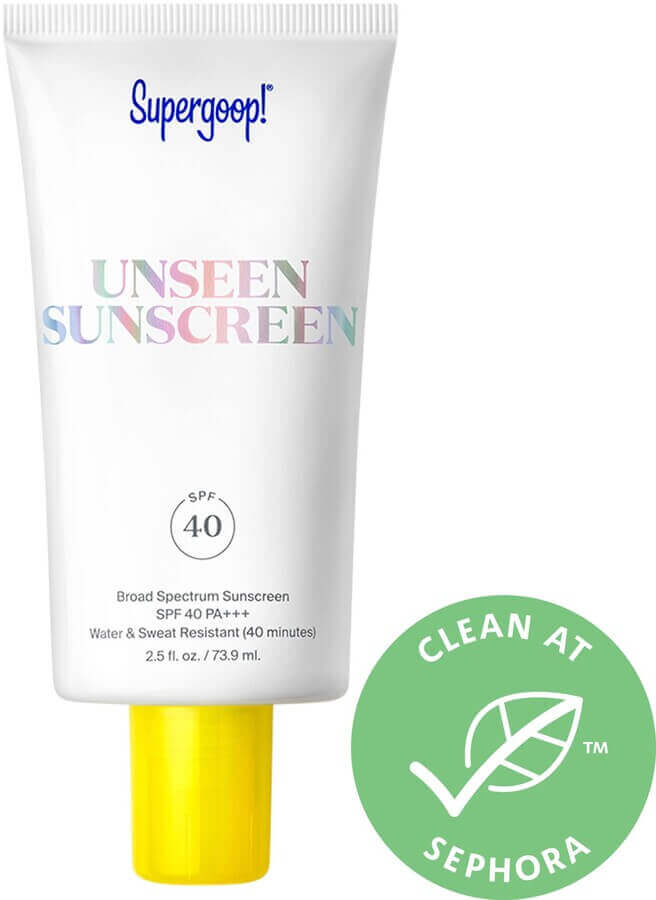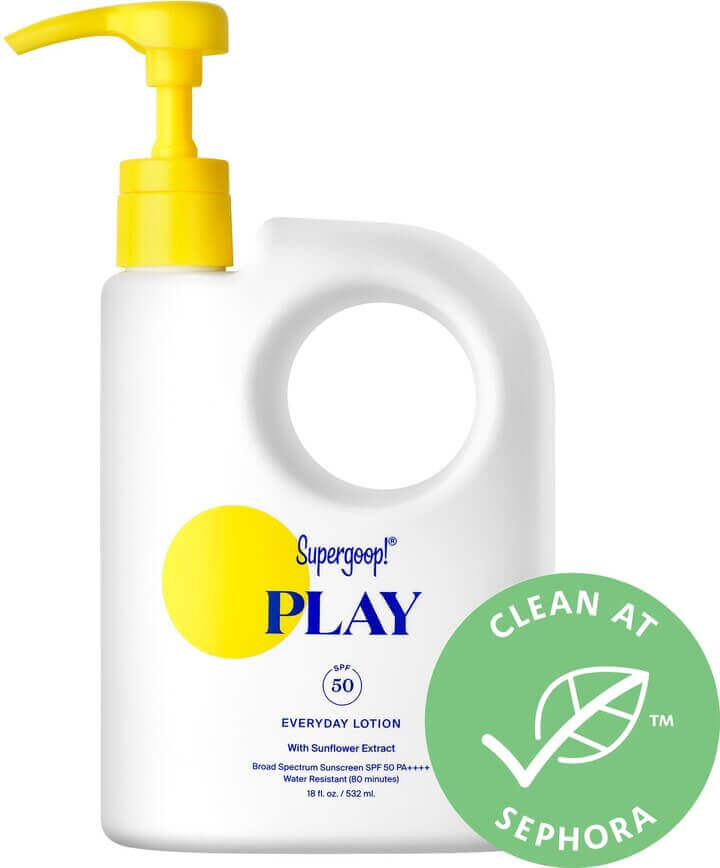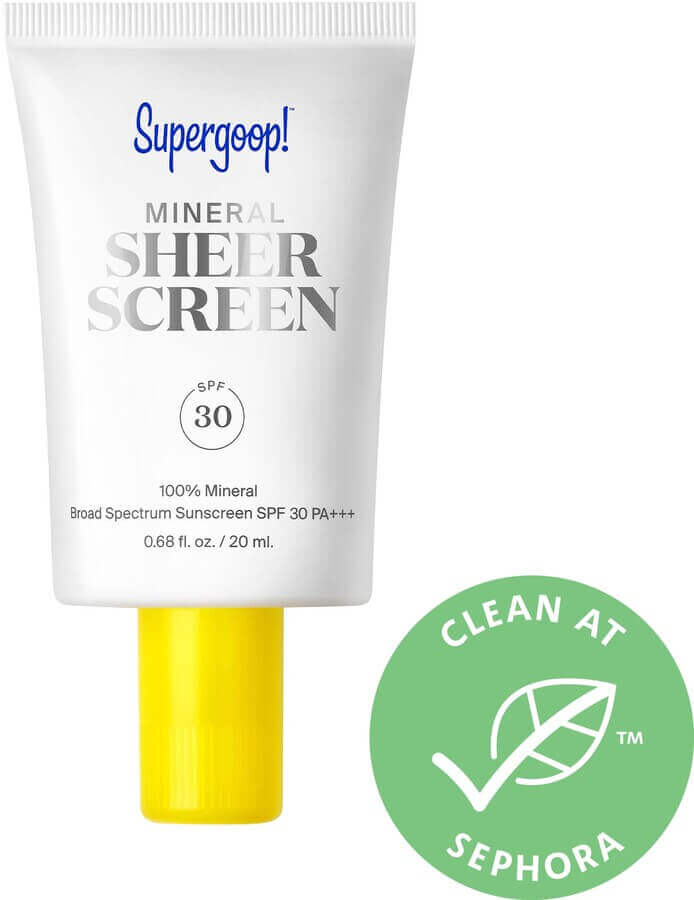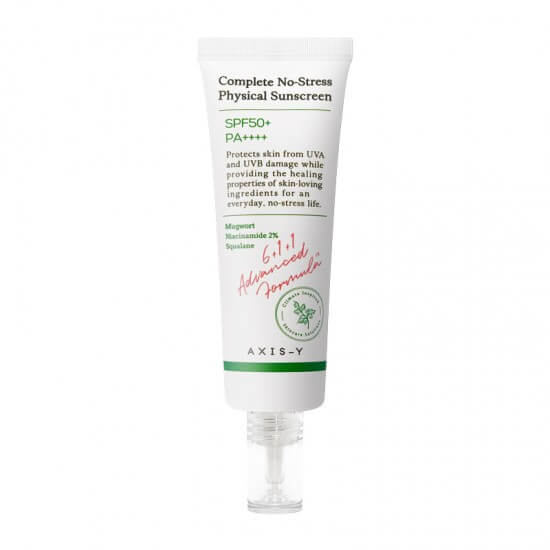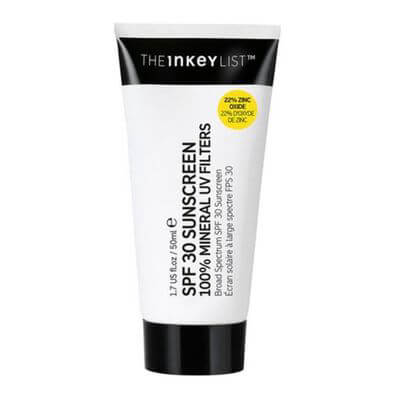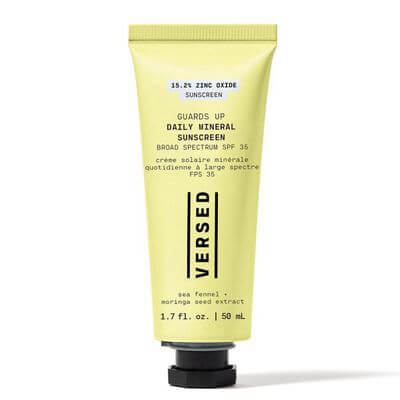This post may contain affiliate links. For more information, read the full disclosure here.
We’ve all been there, standing in the sunscreen aisle, overwhelmed by choices. The labels shout “SPF 50!” or “Water Resistant!” at us. But have you ever seen a label that says “Reef-Safe” and wondered what it means? Well, you’re not alone.
Reef-safe sunscreens are exactly what they sound like – sunscreens that are safe for our beautiful coral reefs.
They lack harmful chemicals like oxybenzone and octinoxate, which can cause coral bleaching. Yep, your regular sunscreen might be harming those vibrant underwater ecosystems you love to explore while snorkeling on your vacation.
In this article, we’ll delve into the world of reef-safe sunscreens: why they’re important, how they work, and how to choose the right one for you. It’s time to protect both your skin AND our oceans!
What Is Reef-Safe Sunscreen?
You’ve probably heard the term “reef-safe sunscreen” being thrown around lately, especially if you’re someone who loves to spend time in the water. But what does it mean exactly?
What Makes A Sunscreen Reef-Safe
Reef-safe sunscreen is, simply put, a type of sunscreen that’s been designed to minimize its impact on coral reefs and other marine life. Now, you might be wondering why regular sunscreens would harm our oceans in the first place.
Well, it turns out that many common sunscreens contain chemicals like oxybenzone and octinoxate. When these substances wash off our skin while we swim or snorkel, they can cause significant damage to coral reefs by promoting viral infections among corals and even causing bleaching events!
As a result, some places with significant coral populations have started banning sunscreens containing these harmful ingredients.
How Do I Know If A Sunscreen Is Reef Safe?
Now comes an important question: how can you tell if sunscreen is truly reef-safe? Well, firstly – check for labels stating ‘reef safe’ or ‘marine friendly.’
Companies are becoming more conscious about this issue, so they’re making it easier for consumers like us!
But don’t stop there! Remember those nasty chemicals we talked about earlier – oxybenzone and octinoxate? Make sure they aren’t listed in the ingredients section, either.
The absence of these compounds usually indicates that your sunscreen is safer for our ocean friends.
Lastly – remember not all products labeled as ‘reef safe’ really are! Some countries don’t have regulations defining what constitutes reef safety in sunscreens yet. So, doing your own quick research on the product and its ingredients is always a smart move.
The 6 Best Reef-Safe Sunscreens
Supergoop Unseen Sunscreen SPF 40
- Type: Clean Chemical
- Skin type: All Skin Types
- Finish: Natural, Velvety Finish
- Price: $20-$36
- This does contain 4% Octocrylene.
Product description: This innovative, antioxidant-rich multitasker has a unique oil-free formula that glides onto the skin while providing broad-spectrum SPF 40 protection. Use it as a makeup-gripping primer under foundation when you want a little more coverage, or on its own if you want a more natural look.
Supergoop PLAY Everyday Lotion SPF 50 with Sunflower Extract
- Type: Clean Chemical
- Skin type: All Skin Types
- Finish: Natural Finish
- Price: $10-$68
- This does contain 7.5% Octocrylene.
Product description: This hydrating, fast-absorbing formula provides high-performance protection from UVA, UVB, and IRA rays, while also helping prevent photoaging and dehydration. It is formulated to be water- and sweat-resistant for 80 minutes, so it’s perfect for a day of play (i.e. things like running or going to the beach). It also smells amazing.
Supergoop Mineral Sheerscreen SPF 30
- Type: 100% Mineral
- Skin type: All Skin Types
- Finish: Satin Finish
- Price: $17-$38
- Active Ingredient: Zinc Oxide 17.5%.
Product description: Developed with breakthrough SheerMatrix Technology, the super sheer formula suspends the sunscreen actives in a matrix without compromising efficacy, so it instantly blends to a natural, smooth finish that wears well alone or as a primer under makeup.
AXIS-Y Complete No-Stress Physical Sunscreen SPF50
- Type: 100% Mineral
- Skin type: All Skin Types
- Finish: Natural Finish
- Price: $23
- Active Ingredient: Zinc Oxide.
Product description: A Mugwort-based sunscreen featuring 2% Niacinamide and Squalane that protects skin from UVA and UVB damage while providing the healing properties of skin-loving ingredients for every day, no-stress life.
The Inkey List SPF30 Sunscreen 100% Mineral UV Filters
- Type: 100% Mineral
- Skin type: All Skin Types
- Finish: Natural, Hydrating Finish
- Price: $20.69
Product description: Want a reef-safe SPF that offers broad-spectrum UVA and UVB protection while also being vegan, cruelty-free, and sustainable too? The Inkey List’s SPF 30 Daily Sunscreen does all that thanks to a formula that unites ultra-protective 22% non-nano zinc oxide, 1% Pollustop to help protect skin from pollutants and prevent premature skin aging, and a 2% shea butter complex to help moisturize and calm skin.
Versed Guards Up Daily Mineral Sunscreen Broad Spectrum SPF 35
- Type: 100% Mineral
- Skin type: All Skin Types
- Finish: Natural, Glowy Finish
- Price: $24.99
- Active Ingredient: Zinc oxide, 15.2%
Product description: This mineral sunscreen with SPF 35 and lightweight moisture is great for all skin types, including acne-prone. Its creamy texture has a natural, skin-like finish—not too dewy, not too matte. And while the formula has a peachy hue to counteract the white cast common of physical SPF, it is not tinted—but rather, virtually undetectable on nearly all skin tones.
The Importance Of Coral Reefs
Alright, imagine you’re in a magical underwater world full of colors and life, where fish of all shapes and sizes dart among vibrant corals, and everything seems to be in perfect harmony. Well, that’s the enchanting world of coral reefs!
Now, why are coral reefs so incredibly important? Let me break it down for you:
- Biodiversity Hotspots: Coral reefs are like bustling cities for marine life. They provide a home to a dazzling array of creatures, from tiny shrimp to majestic sea turtles. In fact, they’re one of the most biodiverse ecosystems on the planet, even though they cover less than 1% of the ocean floor.
- Fisheries and Food: Many fish that we humans love to eat, like snapper and grouper, rely on coral reefs as nurseries. These reefs offer safe spots for fish to grow and reproduce, which helps support the livelihoods of millions of people who depend on fishing.
- Coastal Protection: Coral reefs act as natural barriers, reducing the impact of waves and storms on coastlines. They help protect coastal communities from erosion and damage caused by hurricanes and other extreme weather events.
- Tourism and Recreation: Let’s not forget the tourism industry! Coral reefs are a big draw for snorkelers and divers, providing stunning scenery and adventure opportunities that boost local economies. Who wouldn’t want to swim among colorful fish and vibrant corals?
- Medicinal Potential: Coral reefs also hold incredible potential for medicine. Some of the creatures living there produce compounds that have been used in treatments for diseases like cancer, arthritis, and bacterial infections.
- Carbon Sink: Coral reefs play a role in mitigating climate change. They capture and store carbon dioxide from the atmosphere, helping to reduce the effects of greenhouse gas emissions.
Now, here’s the catch: coral reefs are in danger. Factors like climate change, ocean acidification, overfishing, and pollution are putting them at risk.
When corals are stressed, they can expel the colorful algae that live within them, leading to coral bleaching and, ultimately, the death of the reef.
But here’s the good news: we can help! By taking steps to reduce our carbon footprint, supporting sustainable fishing practices, and protecting these fragile ecosystems, we can ensure that coral reefs continue to thrive and enchant future generations with their beauty and importance. 🐠🌊🌏
How Traditional Sunscreens Affect Marine Life
When you’re lathering up with sunscreen for a day at the beach, it’s easy to forget about the potential impact of your actions on the world beneath those ocean waves.
But did you know that some common ingredients in traditional sunscreens can actually be quite harmful to marine life? So, how exactly do these sun-protecting concoctions wreak havoc underwater?
Well, when you take a dip in the ocean, some of your sunscreen washes off and mingles with seawater. And it’s not just a tiny amount we’re talking about here – studies have found that around 14,000 tons of sunscreen end up in our oceans every year.
What happens next is what causes problems for our finned friends. The chemicals from these sunscreens can cause coral bleaching – which means they lose their color and are more susceptible to disease and death.
How Chemicals in Traditional Sunscreens Harm Aquatic Ecosystems
Now, let’s delve into specifics. Oxybenzone and octinoxate are two culprits commonly found in non-reef-safe sunscreens. When these chemicals find their way into aquatic environments:
- They disrupt coral growth processes, leading to bleaching.
- They contribute to genetic damage, which could lead future generations to be unable to survive.
- Fish species may also suffer from reproductive effects due to these toxins.
But wait! It doesn’t stop there! These chemicals aren’t picky about who they harm – other marine life, such as dolphins, also experience negative side effects when exposed.
By choosing reef-safe options, you’re taking a step to protect those magnificent underwater ecosystems that we all love and depend on!
Key Ingredients To Avoid In Sunscreens
We’ve mentioned them already, but let’s dive a little deeper into the dangers of Oxybenzone and Octinoxate. They may protect your skin, but it’s a different story for our reefs.
These chemicals are notorious for their damaging effects on coral DNA, leading to coral bleaching and reef death.
According to research published by Archives of Environmental Contamination and Toxicology, even small amounts can cause significant harm. For instance, one drop in 6.5 Olympic-sized swimming pools is enough to induce harmful effects!
Parabens In Sunscreens: Hidden Threat To Marine Life
Next up are parabens – preservatives often used in cosmetics and sunscreens. While they keep your sunscreen fresh, they’re not so good for aquatic life.
Parabens have been identified as endocrine disruptors – substances that mess with the hormonal systems of living organisms – affecting everything from reproduction rates to growth patterns across various species of marine life.
If we want our oceans teeming with diversity rather than chemical pollutants, it’s time we rethink what goes into our sunscreen bottles.
Why You Should Steer Clear of Retinyl Palmitate
Retinyl Palmitate might sound fancy – after all, who doesn’t like a little Vitamin A? But here’s where things get murky: when exposed to sunlight (which, let’s face it, is pretty much guaranteed when you’re using sunscreen), this ingredient can break down and produce free radicals.
These are unstable molecules that can damage your skin cells and accelerate skin aging – the very thing most of us use sunscreen to prevent!
A study by the National Toxicology Program found evidence suggesting Retinyl Palmitate may even speed up cancerous cell growth when applied to skin in sunlight. Yikes!
Comparing Biodegradable And Mineral-Based Options
Let’s dive into the world of sunscreens! You’re probably wondering, “What’s the big deal about biodegradable and mineral-based options?” Well, stick with me, and you’ll find out.
Biodegradable Sunscreens: Are They Truly Reef-Safe?
Now, when you hear ‘biodegradable,’ you might think it’s automatically eco-friendly. But here’s the kicker: not all biodegradable sunscreens are reef-safe. Why?
Well, they may break down over time, but some can still contain chemicals harmful to marine life, like oxybenzone or octinoxate. So, while they’re a step in the right direction, it’s important to scrutinize their ingredient list just as thoroughly as any other sunscreen.
Mineral-Based Sunscreens: The Best Option for Coral Reefs?
You’ve likely heard about mineral-based sunscreens too. And yes, they’re often touted as the most coral-reef-friendly choice out there.
These sun protectors use minerals like zinc oxide or titanium dioxide, which physically block UV rays instead of absorbing them as chemical filters do.
Here are a few benefits that make them stand out:
- They start protecting your skin immediately upon application.
- There’s less risk of skin irritation compared to chemical filters.
- They don’t harm coral reefs – in fact, research shows they have minimal impact on marine ecosystems!
However, nothing is perfect – even these good guys have a downside. Some people find mineral-based options leave a white cast on their skin due to those protective minerals not fully absorbing into their skin.
Conclusion: Making A Difference With Your Choice
You’ve journeyed through the facts and learned about the impact of sunscreens on our beautiful coral reefs, and now it’s time to make a choice. But remember, your decision isn’t just about protecting your skin; it’s also about safeguarding our planet.
The sunscreen you choose truly matters. By opting for reef-safe sunscreens, you’re not only shielding yourself from harmful UV rays but also ensuring that these magnificent underwater ecosystems continue to thrive.
It’s pretty incredible when you think about it – something as simple as choosing one type of sunscreen over another can make such a huge difference!
Now, let’s break down what we’ve covered:
- Reef-safe sunscreens are those that don’t contain oxybenzone and octinoxate – two chemicals known for causing harm to coral reefs.
- Regularly using reef-safe alternatives helps in preserving marine life and contributes positively towards maintaining biodiversity.
- The market offers plenty of reef-friendly options. These range from lotions to sprays, catering to different preferences while providing adequate protection against UV rays.
It’s essential that we all play our part in this crucial matter. Remember how much power there is in your choices!
Whether it’s picking up trash at the beach or switching over to eco-friendly products like reef-safe sunscreens – every little bit counts.
shop the post
See all my favorite products here.

